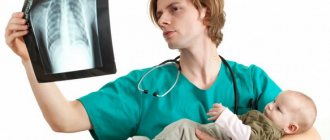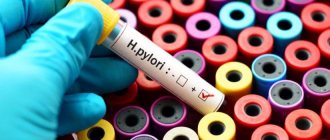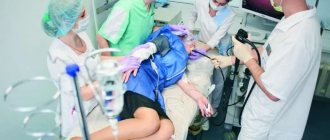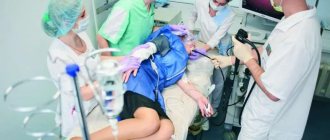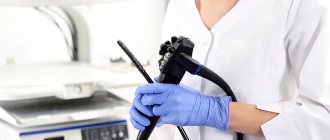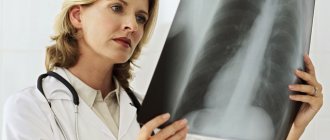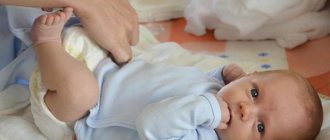Endoscopic examination of the gastrointestinal tract remains one of the most informative methods for diagnosing diseases of internal organs in childhood. The examination often uses an additional type of gastroscopy - FGDS (fibrogastroduodenoscopy), which is prescribed for children to examine the upper parts of the stomach and digestive tract. It allows you to identify pathological changes in tissue, foci of inflammation, evaluate the structure and structure of the esophagus, stomach and duodenum.
When is pediatric gastroscopy and FGDS needed?
The technique is quite stressful for children, so it is routinely carried out only for certain indications, which include:
- pain when swallowing;
- vomiting with blood or bile;
- the appearance of blood in the stool;
- periodic abdominal pain;
- frequent heartburn and belching;
- pathological reflux (regurgitation) in infants;
- poor appetite;
- pain after eating;
- previously identified gastrointestinal pathologies.
Emergency reasons for gastroscopy of the stomach in children may be life-threatening conditions:
- bleeding from the upper digestive tract;
- suspected life-threatening congenital malformations;
- child ingestion of dangerous objects or suspicion of it.
Differences between sedation and general anesthesia
Although the differences between the concepts of anesthesia and sedation are sometimes confused, a clear line can be drawn between them.
Anesthesia is a more serious procedure during which sedatives, opioid analgesics (for pain relief) and sometimes muscle relaxants (to relax peripheral muscles, are not used for FGDS) are used.
Then careful monitoring by an anesthesiologist is required, and the process of exiting this state is quite long (up to several hours).
Sedation is a much simpler procedure. It is often called “medicated sleep.” intravenously . This medication has a pronounced calming and sedative effect, and provokes the development of a state of drowsiness in the child. In addition, it has an anticonvulsant effect, which allows the use of sedation for many diseases of the central nervous system.
Help Among the advantages of sedation, it is necessary to highlight the quick awakening of the child and the low frequency of side effects. The combination of these factors has made it a routine and safe procedure that is widely performed in public and private clinics.
Contraindications to gastroscopy
Contraindications to the procedure are:
- severe pathologies of the cardiovascular and respiratory systems;
- blood clotting disorder;
- serious mental illness;
- acute respiratory infections;
- neoplasms that make it difficult to insert an endoscope;
- developmental anomalies in which there is a pronounced narrowing of the esophagus.
At what age can gastroscopy (FGDS) be performed on children? If the situation requires, the procedure is performed even on newborns.
Order of conduct
The study is carried out on an empty stomach. Before inserting the endoscope, the oropharynx is anesthetized with a special solution that reduces discomfort and the gag reflex. The endoscope is inserted through the mouth and pharynx into the esophagus and stomach. Data from the camera at the end of the endoscope is transmitted to the monitor, the doctor examines all the walls of the stomach, its lumen and, as the device is withdrawn, assesses the condition of the esophagus.
“SM-Clinic”, where you can perform a gastroscopy on a child, is equipped with modern equipment, and experienced gastroenterologists will help you perform the procedure quickly with minimal discomfort. For your convenience, online registration is available. Over the phone, the center’s specialists will clarify the price of gastroscopy for a child, tell you about all the nuances of preparation and select the most convenient time for the manipulation.
How to prepare for research
Before gastric endoscopy, the child must be properly prepared so that the examination is as informative and comfortable as possible. A special diet is not required, but 2-3 days before the test it is necessary to exclude from the diet foods that take a long time to digest and increase gas formation. Gastroscopy of the stomach for children is usually done in the morning, before breakfast and strictly on an empty stomach. Infants can be given some clean water or breast milk, but not less than 2 hours before the test.
An important point: children who will be examined under local anesthesia must be told what the doctor will do and how, how long they need to wait and why this is important. Preliminary psychological preparation and parental support are the key to the comfort and tranquility of the little patient.
You don’t need to take anything with you to gastroscopy; the only thing you can take for your child is your favorite toys or books to keep your baby occupied while he is under the supervision of doctors after the procedure.
Before endoscopy, your doctor may prescribe:
- general blood analysis;
- blood clotting test;
- group and Rh factor;
- analysis for the hospital group and ECG during the procedure under sedation.
Prices
| Name of service (price list incomplete) | Price |
| Appointment (examination, consultation) with a gastroenterologist, primary, therapeutic and diagnostic, outpatient | 1750 rub. |
| Prescription of treatment regimen (for up to 1 month) | 1800 rub. |
| Consultation (interpretation) with analyzes from third parties | 2250 rub. |
| Consultation with a candidate of medical sciences | 2500 rub. |
| Ultrasound of the abdominal organs (comprehensive) | 2900 rub. |
| Ultrasound of the retroperitoneal space (and retroperitoneal lymph nodes) | 1400 rub. |
| Ultrasound of the gallbladder | 1400 rub. |
| Ultrasound of the abdominal organs (comprehensive) | 2900 rub. |
| Ultrasound of the liver | 1600 rub. |
| Ultrasound of the spleen | 1600 rub. |
| Diagnosis of Helicobacter pylori infection (HELPIL test) | 1200 rub. |
| Colonoscopy | 5050 rub. |
| Biopsy during endoscopic examination (1 biopsy) | 1000 rub. |
| Body composition assessment - bioimpedance analysis | 2150 rub. |
| Body composition assessment - repeated (bioimpedance analysis) | 1750 rub. |
| Esophagogastroduodenoscopy (EFGDS) | 3050 rub. |
How is gastric FGSD performed for children?
Two types of anesthesia are used for the examination:
- medicated sleep;
- treatment with local anesthetic drugs.
The choice of anesthesia depends on the child’s age, body characteristics and type of operation (planned or emergency). It is difficult to explain the need for the procedure to children under 2–3 years of age, so these patients are generally provided with short-term sleep.
How is gastroscopy of the stomach done in children?:
- the child is placed in a stable position on the left side so that the right leg is bent and pulled towards the stomach, and the left is straightened;
- a special device is inserted into the oral cavity - a mouthpiece; it will prevent the baby from accidentally closing his mouth during the procedure and will prevent injuries to the palate or gums;
- the baby’s head is slightly pulled back and fixed in the desired position;
- a pre-prepared device is inserted into the throat, and when the child involuntarily swallows, it is pushed into the digestive tract.
If everything is done correctly, there is no cough or difficulty breathing. In some cases, to facilitate the passage of the gastroscope through the esophagus and to improve the quality of the image, air is supplied to the area under study. The amount is strictly dosed to prevent swelling of the internal organs. If necessary, a biopsy is performed directly during gastroscopy - the collection of biological material for further research in the laboratory.
After completing the examination and recording the results, the equipment is carefully removed, and the baby is turned over on his stomach so that air can escape from the esophagus. The child is sent under the supervision of an anesthesiologist for 2 hours.
Gastroscopy takes from 15 minutes to half an hour. After the procedure is completed, parents are given a conclusion and photographs taken during the examination.
Possible consequences of gastroscopy
Within 30–40 minutes after FGSD, slight difficulties with swallowing are possible. In some cases, there is mild numbness and tingling in the throat, which disappears after 1-2 hours. Sometimes children complain of slight discomfort and pain in the abdomen. Some patients experience numbness of the tongue.
Serious complications are very rare. These include:
- damage to the mucous membranes of the esophagus and stomach;
- esophageal rupture;
- gastric perforation;
- bleeding.
Endoscopic examinations in children
We have been performing endoscopic examinations on children for more than 30 years. Examination of the stomach and/or intestines in children is performed under anesthesia or “during sleep” most often.
Gastroscopy and colonoscopy can be done for children and there is nothing unusual, much less scary, about it. We have described here, in this section, the nuances that we have, what they write on the forums - let it remain there, in the end it’s up to you to compare.
Most often, we perform endoscopy (both gastroscopy - examination of the stomach and duodenum, and colonoscopy - examination of the large intestine) for children from the age of 3 years, since around this age some problems begin and the child reports them (if only these problems , unfortunately, are not congenital and, accordingly, did not begin much earlier), and pediatricians, accordingly, begin to look for sores and prescribe examinations.
Recently, examinations of the stomach and/or intestines in children are performed under anesthesia or “during sleep” more and more often. It’s more comfortable for parents, pediatricians and us. Not a single case of complications during intravenous anesthesia using the technique adopted in our clinic has been registered over the past few years.
Are there any differences when performing gastroscopy in adults and children?
There are no fundamental differences in the technique; moreover, as a rule, children tolerate the procedure much easier. This is a physiological factor (extensibility of ligaments, muscles, good blood supply to mucous membranes, etc.), and the absence of negative psychological attitudes.
At the same time, the procedure for children has a number of nuances, in contrast to the same procedure for adults. Firstly, gastroscopy in children under 10 years of age in our clinic is performed with a special, ultra-thin, smaller gastroscope; the mucous membrane in children is still very thin, the esophagus is narrow and easily vulnerable. Secondly, in children under 7 years of age, we usually perform gastroscopy under anesthesia. The basis is the order of the Ministry of Health , indicating that “if the procedure is accompanied by pain in the child, it should be performed under anesthesia.”
The process of preparing for gastroscopy in children is identical to adults - the last meal is no later than 20.00 on the morning of the examination.
Are there any differences when performing colonoscopy in adults and children?
Colonoscopy for children under 10 years of age is performed with a special, thinner, smaller colonoscope than for adults. The examination in a child 11 years of age and older is usually performed with a standard colonoscope, but, naturally, the size of the device is selected based on the child’s physique; if in doubt, the choice is always made in favor of a thinner device.
A child needs to prepare the intestines for examination in the same way as an adult, otherwise the intestines will not be examined. The method of preparation for the study, the drug for cleansing the intestines and its dose are selected by the attending physician, so we do not publish on our website any universal preparation regimen for children.
We almost always perform colonoscopy for children “in their sleep,” i.e. under anesthesia.
If parents are against anesthesia for their child?
If the parents are against it, and the child is no more than 7 years old, then we first convince them that with anesthesia it will be more comfortable for everyone, and most importantly, for the child. And it is completely safe - in our country anesthesia is carried out by special pediatric anesthesiologists with the same drug as in the USA, Europe or Israel, and there have not been a single case of any complications. If parents continue to insist, we can conduct the study without anesthesia.
If any manipulation is required (regardless of whether it is taking biopsies from the gastric mucosa, determining acidity or removing a polyp), we reserve the right not to perform these manipulations without anesthesia in children 10 years of age and younger, since in some cases additional manipulations are noticeable lengthen the time of the endoscopic procedure, which can cause moral trauma to the child.
Can the child's mother or father be present at the procedure?
We have no secrets from parents and we personally are not against the presence of parents at the procedure. But, as a rule, most parents trust doctors and refuse to observe the manipulation themselves. In any case, at the request of the parents, we can record the entire study on a CD from beginning to end so that we can show it to other specialists and/or in another medical institution.
Clarifications and restrictions.
Pre-registration required. Due to the fact that the children's building has not yet been opened after renovation, we conduct all studies of children on the territory of the adult department. An endoscopic examination of a child is a responsible procedure, the time of which must be previously agreed upon.
A referral from the attending physician is required both for the examination itself and for additional examinations that can be performed during gastroscopy or colonoscopy (biopsy, acidity measurement, examination in a narrow spectrum of light, and a number of others). The examinations that a parent considers necessary for their child are not always considered as such by the attending physician. If an adult prescribes research for himself, this is his, the adult’s, personal choice, for which he himself is responsible. But when it comes to children, the situation changes, since you have to carry out research in a situation where the child does not want to do it at all. If the decision of the child’s parent is not supported by the opinion of the attending physician, we consider this to be incorrect and reserve the right to refuse the study.
Rehabilitation after gastroscopy
The first meal after an endoscopic examination of the gastrointestinal tract is possible after 1.5–2 hours. It is advisable to give your child warm, liquid and soft foods that are easier to swallow and do not require long chewing. Experts recommend feeding children more often, but in smaller portions, for 2-3 days after the procedure, and be sure to actively drink clean water or other safe drinks.
For the first few days after the procedure, you will have to limit outdoor games, running, jumping and other physical exercises. There are no other special rules of behavior, but the doctor will give individual nutritional recommendations or prescribe supportive drug therapy.
Possible complications
Sedation has a good track record of use for patients of all ages. After the end of the study, the child wakes up within a few minutes. The effect of the drug is still observed for an hour, during which medical supervision is required. During this period, the following complications occur in children:
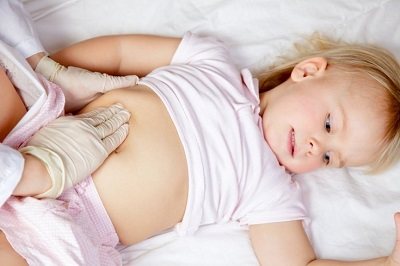
- pain in the upper abdomen;
- aching headaches;
- dyspeptic disorders (decreased appetite, hiccups, nausea);
- periodic dizziness;
- child's anxiety;
- increased irritability;
- drowsiness;
- local or generalized allergic reactions;
- decreased concentration;
- anxiety;
- cardiopalmus.
Important: Anesthesia can cause more serious side effects.
The child will gradually recover from anesthesia within a few hours. Medical observation is required for another day after the FGDS. Among the complications it is necessary to highlight:
- coordination disorders (especially pronounced when walking);
- burning sensation of the skin;
- weakness and drowsiness;
- increased irritability, anxiety, emotional fluctuations;
- negative effect on breathing processes;
- allergic reactions to drugs;
- severe trembling of the limbs;
- entry of stomach contents into the respiratory tract;
- decreased appetite;
- muscle and joint pain;
- decrease in blood pressure.
The process of returning the patient to a normal state is longer. Some side effects from medications can last up to 48 hours.
This article will help you move through the FGDS procedure more easily.
Description of the procedure, what FGDS shows
FGDS is carried out in special diagnostic rooms as planned or urgently, strictly on an empty stomach.
Before the procedure, the patient is introduced to the examination technique, and written permission to conduct it is taken.
FGDS procedure
A nurse or doctor irrigates the throat with lidocaine spray if there is no allergy to it (this issue must be clarified in advance).
The patient is placed on the couch on his left side. The position should be convenient and comfortable for the patient, otherwise he will be tense, and this interferes with the insertion of the probe.
A mouthpiece is inserted into the mouth for ease of insertion of the endoscope (sometimes the device for FGS is called a gastroscope) and so as not to injure the mucous membranes of the lips and mouth.
The doctor begins to insert the endoscope, the patient, at the doctor’s command, performs a swallowing movement. At the time of administration, a gag reflex may appear, but if you breathe deeply and calmly, this condition goes away. After insertion of the endoscope, you should not swallow; saliva is collected by suction.
When the probe is inserted, air is introduced into the stomach (to straighten the folds) so that the mucous membrane can be better examined.
The duration of the procedure is 5-10 minutes and, if the doctor’s requirements are met, does not cause much discomfort to the patient.
If any therapeutic measures are carried out, then the time of its implementation reaches 30 minutes.
In some cases, the study is performed under general anesthesia (children, the patient’s agitated state, complete pain intolerance).
With FGDS you can see:
- what is the condition of the mucous membrane and walls of the stomach and esophagus;
- scar formation;
- narrowing of the lumen of the esophagus;
- degree of reflux (reflux - stomach contents enter the esophagus);
- various neoplasms.
After the procedure, the endoscopist issues an FGDS conclusion - the result of the examination, a description of the consistently seen picture of the mucous membranes of the esophagus, stomach, pylorus, and duodenal bulb. The presence of free patency, peristalsis, the amount of gastric secretion/bile reflux, varicose veins, plaque, closure/insufficiency of the cardiac rosette, inflammation (hyperemia, swelling), folds, and damage are indicated.
Quite often, a biopsy is taken - a microscopic piece of the mucosa to check for the presence of malignant cells.
